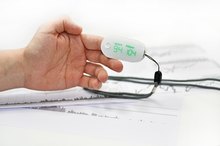How to Use a Venturi Mask
Supplemental oxygen is an important aspect of supportive care, both in the hospital and at home. A Venturi mask -- also known as an air-entrainment mask -- is a medical oxygen delivery mask that utilizes a flow meter to deliver a precise amount of oxygen. Venturi masks are indicated for use in those individuals experiencing chronic or acute respiratory distress, or when an arterial blood gas result indicates a need.
Wash your hands with soap and warm water. Hygiene is crucial when handling oxygen masks and supplemental oxygen tubing.
Different Types of Oxygen Masks
Learn More
Remove the mask and oxygen tubing from the packaging 1. Inspect the mask and tubing -- looking for cracks and discoloration. Discard any masks or tubing that are not intact.
Select the appropriate flow valve according to a physicians orders. Venturi valves are colored according to the amount of oxygen they deliver in liters per minute.
Most manufacturers follow a standard color chart. Refer to the instruction manual of the mask, if you are unsure.
Blue valves deliver 2 liters of oxygen per minute at a 24 percent concentration. White valves deliver 4 liters per minute at a 28 percent oxygen concentration. Yellow valves deliver 6 liters per minute at a 35 percent oxygen concentration. Red valves deliver 8 liters per minute at a 40 percent oxygen concentration. Green valves deliver 12 liters per minute at a 60 percent oxygen concentration.
What Is a Non-Rebreather Mask?
Learn More
Assemble the mask by inserting the flow valve into the mask. Attach the oxygen tubing to the mask and the supplemental oxygen source 1.
Place the mask on the face, so that the small pointed end of the mask rests on the bridge of the nose. The larger rounded portion of the mask should rest on the chin. Pull the elastic band gently over the back of the head to secure the mask in place.
Pull the ends of the elastic band to make adjustments to the mask, so that it fits comfortably. Make sure the mask and bands are not impeding venous blood flow. Signs of impeded blood flow are pain, numbness, and discoloration of the area.
Turn on the supplemental oxygen -- adjusting it slowly -- until you reach the desired therapy level.
Check the tubing and mask for leaks. Tighten airline connections and mask fit, as needed to fix leaks.
Tips
In the hospital setting, Venturi masks are for single patient use; discard additional regulators, only after the patient has been discharged.
Related Articles
References
- BMJ: Acute Care: Treatment with Oxygen
- Things to Know When Using Oxygen Therapy. American Lung Association. August 23, 2018
- The Long-Term Oxygen Treatment Trial Research Group. A Randomized Trial of Long-Term Oxygen for COPD with Moderate Desaturation. The New England Journal of Medicine. 2016;375(17):1617-1627. doi:10.1056/NEJMoa1604344.
- American Lung Association. Supplemental Oxygen. 2017.
- Shah SA, Velardo C, Farmer A, Tarassenko L. Exacerbations in Chronic Obstructive Pulmonary Disease: Identification and Prediction Using a Digital Health System. Eysenbach G, ed. Journal of Medical Internet Research. 2017;19(3):e69. doi:10.2196/jmir.7207.
- Turan O, Ure I, Turan PA. Erectile dysfunction in COPD patients. Chron Respir Dis. 2016;13(1):5–12. doi:10.1177/1479972315619382
- Traveling with Oxygen. American Lung Association. October 3, 2018
- Nishimura M. High-flow nasal cannula oxygen therapy in adults. J Intensive Care. 2015;3(1):15. Published 2015 Mar 31. doi:10.1186/s40560-015-0084-5
- Abdo WF, Heunks LM. Oxygen-induced hypercapnia in COPD: myths and facts. Crit Care. 2012;16(5):323. Published 2012 Oct 29. doi:10.1186/cc11475
- American Thoracic Society. Patient Education Information Series. Oxygen Therapy. 2016.
Tips
- In the hospital setting, Venturi masks are for single patient use; discard additional regulators, only after the patient has been discharged.
Writer Bio
Amanda Goldfarb became a freelance writer in 2006. She has written many articles for "Oviedo TRI-Lights," "Cool Runnings" and several other health- and fitness-related blogs. She has also contributed to her town's tri-club newsletter. Goldfarb obtained her Bachelor of Arts degree in English from the University of Central Florida and is currently pursuing a degree in emergency medical services.









